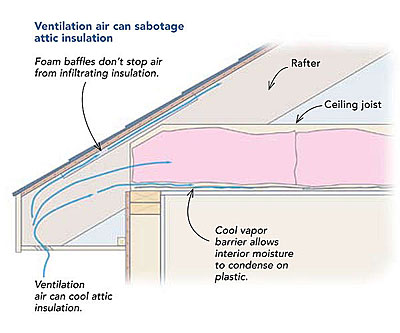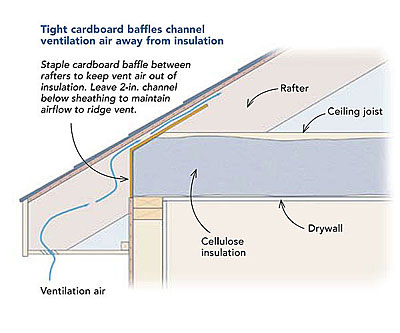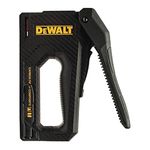Q:
I’m building a house with 2×4 studs, sprayfoam insulation in the stud cavities, and blown-in cellulose insulation over a plastic vapor barrier in the attic.
Ross E. Iverson, Sheridan, WY
A:
Bruce Harley, an engineer and the author of Build Like A Pro: Insulate and Weatherize, replies: The tighter a home is, the more likely it is to have a high relative humidity from interior moisture sources (see Houses Need to Breathe … Right?). This higher relative humidity can contribute to condensation on interior surfaces or inside walls, roofs, and attics when moist air leaks into cold spaces. Your contractor is right about moisture being a potential problem in tight houses, but he missed two important points.
First, most big leaks (though not all) tend to be where the ceiling plane is interrupted by plumbing, duct and chimney chases, wiring holes, dropped ceilings (including soffits and coffered ceilings), and recessed lights, for example. Similar holes are common in basements, where lots of services penetrate the walls. Tight walls won’t make a tight house if the ceiling and the basement are leaky. Sealing the ceiling and the basement is important to prevent moisture migration into attics, to reduce ice dams, and to minimize heating bills.
Second, condensation on plastic can happen only if the plastic becomes cold. This can occur because of poorly installed insulation and/or sloppy roofventing strategies. Make sure insulation is installed carefully and well, to R-38 minimum or whatever local code specifies. The vapor barrier also can become cold from outside air creeping under the insulation. Cardboard baffles that bridge the entire rafter space and extend all the way to the top plate can stop errant air from chilling attic insulation.
Because you’re already paying for foam insulation in the walls, consider “cathedralizing” the attic, especially if any mechanical equipment is already up there. In this approach, the roof deck and the gable ends are insulated with spray foam, eliminating the need for an insulated attic floor. This airseals the attic in one easy step and keeps any ducts inside the conditioned space.
I often advise people who are finishing attics in older homes to use spray foam, even if they have more conventional insulation in the walls, because rooflines can be difficult to insulate and seal effectively. And, of course, I always recommend the installation of a mechanical ventilation system.


Fine Homebuilding Recommended Products
Fine Homebuilding receives a commission for items purchased through links on this site, including Amazon Associates and other affiliate advertising programs.

Staple Gun

Respirator Mask

Original Speed Square

























